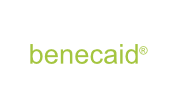





























Depending on the source of your retirement income, the following retirement options may be available to you:
A straight life annuity is an individual annuity contract that provides the annuitant (or purchaser of the contract) with a monthly income benefit during the annuitant’s lifetime, with no further payments at or after death. This type of annuity purchase is only sensible if the additional annuity income is used to purchase a life insurance policy on the annuitant as the annuity payments could potentially cease after a short period of time.
Life Annuities with a guaranteed period have a built-in provision which guarantees that if the annuitant dies during the specified period guaranteed, usually 5, 10, or 15 years, the income will continue to be paid within the specified period to a designated beneficiary of the annuitant. At the end of the specified period (if the annuitant has died), payments stop and nothing further is payable to the beneficiary or the estate of the deceased. Payments will continue beyond the guaranteed period if the annuitant is still alive.
If you arrange a single-life annuity with a guarantee period, and your spouse survives you, your spouse will be paid the same monthly income until the end of the guarantee period. However, if you die after the guarantee period, nothing further is paid.
With a joint-and-last-survivor annuity, payments of either the same amount or a reduced amount will continue to your spouse, depending on what you arranged at the time of purchase. A guarantee period on a joint-life annuity serves the purpose of leaving money for your family or estate should both you and your spouse die before receiving the minimum number of guaranteed payments.
A LIF, or Life Income Fund, is a tax-sheltered account for funds arising from locked-in retirement savings such as locked-in-funds in a Registered Pension Plan (RPP), a Locked-in Retirement Account (LIRA) or a Locked-In RRSP. It allows you to take the money you’ve tax-sheltered in locked-in plans and convert it into regular retirement income. Like a Registered Retirement Income Fund (RRIF), Canada Revenue Agency regulations require that you receive a specific minimum income from your LIF each year. Only the income you actually withdraw each year is taxable, while the balance remains tax-sheltered. Any amount of income can be selected subject to government minimums and maximums. The maximum annual payment is based on a government-set interest rate.
A RRIF, or Registered Retirement Income Fund, lets you take the money you’ve tax-sheltered in your RRSP and convert it into regular retirement income. The income you receive each year is taxable, while the balance remains tax-sheltered. Canada Revenue Agency has established the minimum income level you must receive each year based on a percentage of your RRIF assets. Other than this minimum requirement, the level of income is completely flexible. In contrast to a LIF, there is no maximum income.
An LRIF, or Locked-In Retirement Income Fund is a tax-sheltered account for funds arising from locked-in retirement savings such as locked-in-funds in a Registered Pension Plan (RPP), a Locked-in Retirement Account (LIRA) or a Locked-In RRSP. It allows you to take the money you’ve tax-sheltered in locked-in plans and convert it into regular retirement income. An LRIF is similar to a RRIF, however it assures an income for life without the disadvantages of a LIF. Compared to a LIF, an LRIF has greater flexibility in withdrawing funds as it is subject to a different maximum payout formula.
A LIF, LRIF or RRIF can give you a great deal of flexibility over your retirement capital. If you are one of those people who like to invest their retirement savings in "fixed term" instruments, you can select from a range of guaranteed periods and thus control the interest rate your funds earn. If you elect to spread your investment among a number of fixed term funds, you can increase your flexibility, both in payout options and rates of return.
In times of low interest rates, however, you may choose to invest some of your money in an "investment" product, such as a mutual fund or segregated fund LIF, anticipating higher returns and hence a larger income. In such cases, you must weigh the risks of investment loss against the potential benefits of a higher income.
Whatever the case, LIFs, LRIFs and RRIFs offer superior flexibility in providing tax-sheltered growth while meeting your retirement income needs. You can manage the income from your LIF, LRIF or RRIF by choosing from a variety of pre-scheduled income options, such as Minimum, Level, Interest, Indexed or Maximum Income. You may even take lump sums from time to time to meet unexpected expenses.
Like many people, you might find that a good retirement strategy is to split your locked-in and non-locked-in proceeds between a LIF/LRIF/RRIF and a registered life annuity. In each case, only the income you actually withdraw is taxable.
The life annuity will provide a safe, guaranteed lifetime income, while the LIF/LRIF/RRIF will give you more control over the growth of your capital and more flexibility in the level of income.